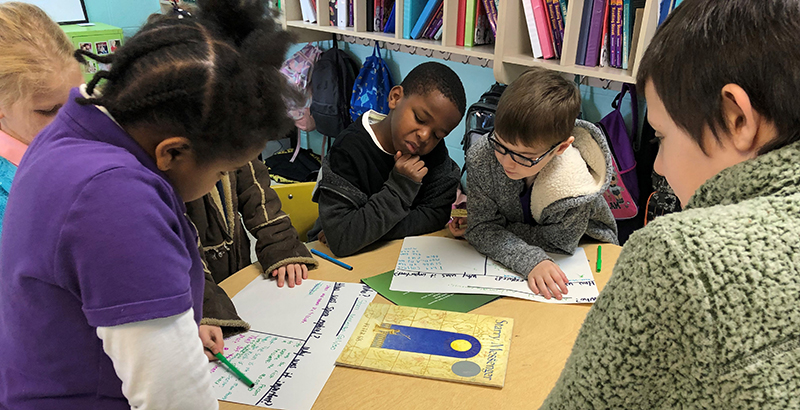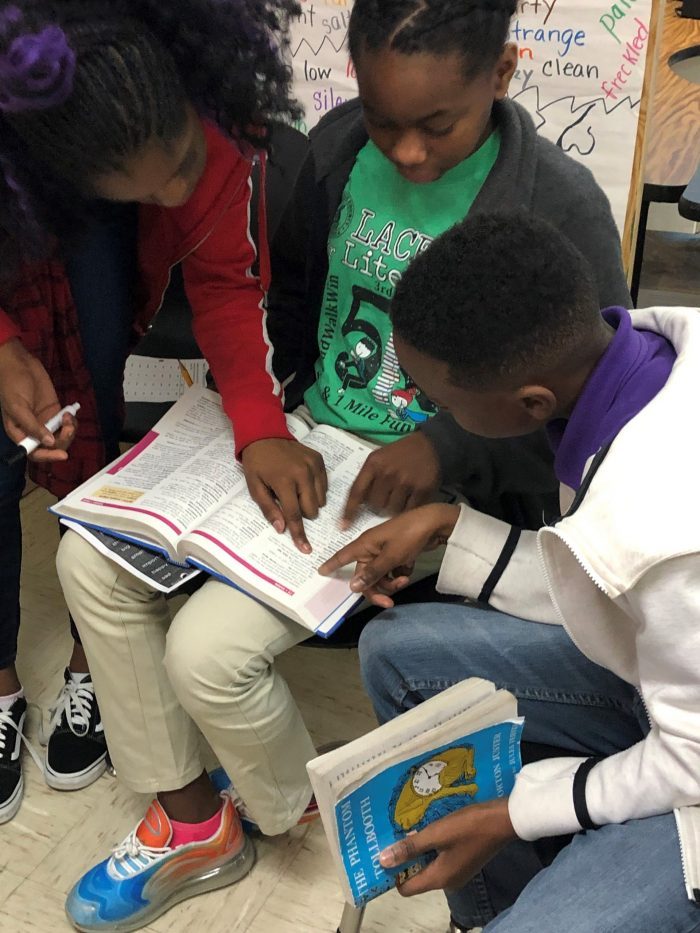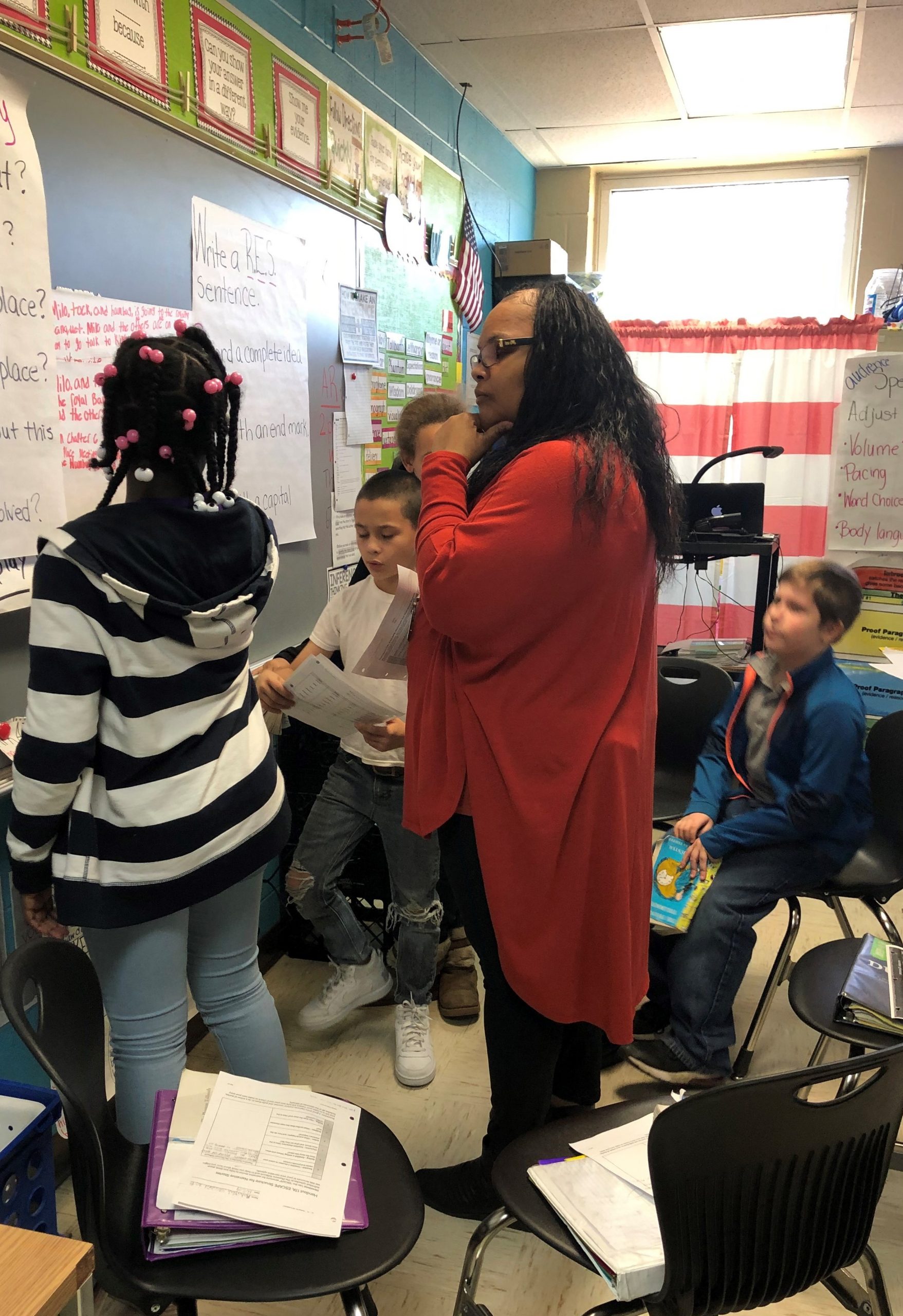Curriculum Case Study: How One Rural Tennessee School District With 25 Percent Student Literacy and Nearly a Quarter of Kids Living in Poverty Is Turning the Tide

This is the third in a series of pieces from a Knowledge Matters Campaign tour of school districts in Tennessee. Lauderdale County sits in the northwest corner of the state. One of nine school districts in Tennessee that was part of the LIFT network, Lauderdale is small — with just three elementary schools. The district has spent the past three years rolling out Wit & Wisdom, one of the newest of the new breed of high-quality English language arts curricula, in all grades K-8. In this piece, Lauderdale County Schools Superintendent Shawn Kimble shares what this implementation has involved for his team. Read an introduction of this series here and the remainder of the pieces in this series here.
The district I lead — Lauderdale County — is located about 60 miles from Memphis, in a rural community in northwest Tennessee where nearly a quarter of residents live below the poverty line. We have amazing teachers, administrators and parents. Our students are as full of potential as children anywhere in the country, but across grades 3-8, only about a quarter are proficient in reading on the state’s TNReady assessment. We have all the ingredients for success; what we didn’t have was a core reading and language arts program to get us there.
But our school district has begun to have real success implementing Wit & Wisdom, a content-rich English language arts curriculum that is referred to as a “humanities” program by its publishers. We started implementing Wit & Wisdom three years ago, attracted to it because data told us that, while we were doing a pretty good job of teaching students to read the words on the page (to decode), they weren’t really understanding (comprehending) what they read. This meant that our students would not be able to use their reading as they would need to in the years ahead.
Wit & Wisdom is a curriculum organized at each grade level around a curated collection of literary and informational texts its authors call “beautiful inside and out,” as well as speeches, interviews, music, visual art, film and more. The texts were intentionally selected to provide opportunities for students to see themselves reflected in them and also to open up for students a knowledge of the world and the world of ideas.
Our literacy team became persuaded by the research about the importance of building background knowledge as the most potent strategy for improving reading comprehension. This research argues that readers need to be able to connect new words and ideas to things they already know in order to fully comprehend the meanings of those new words and ideas — which is a problem if you don’t have knowledge of very many things in the first place.
Our teachers had generally developed curriculum themselves, so Wit & Wisdom represented a very different approach. I won’t deny that, as much as we knew we needed to do something different, there was concern among some of our teachers about using a structured curriculum like Wit & Wisdom that might deprive them of their professional judgement about how to meet the needs of students in their classroom.
Among the things our teachers had to give up was some semblance of control. When you write your own curriculum, you know what’s going to come next. You tend to select topics and texts with which you’re familiar. You know what you’re looking for in your assignments.
We hear a lot in education circles lately about “shifting the cognitive load” from teachers to students. This shift is something we’re witnessing in droves with the adoption of this new structured curriculum. Perhaps the most profound, oft-heard reaction teachers have shared with me about their experience of using Wit & Wisdom is their surprise and excitement about the level of work their students are doing.

Teachers now describe much of their classroom instruction prior to implementing this curriculum as “spewing information.” They realize that they had just expected students to “take it in.” But “Wit & Wisdom is written so that kids are doing more of the digging,” one teacher shared with our Knowledge Matters Campaign visitors. “In the past, the teachers were doing all the talking. Now, we as educators are more the facilitators.”
During a roundtable discussion, we asked teachers how this works and what in the curriculum caused this shift to take place. Among the things they shared was how, in their own attempts to create curriculum, they often taught to the standards in isolation. “We spent a few days on main idea, a few days on content clues, and so on. I think we did a pretty good job of that, but the students didn’t really see reading as the standards intertwined.”
“Their understanding was like a Jenga tower with holes in it,” fifth-grade teacher Nicholas Stevens told us.
The level of student engagement our teachers are seeing in their lessons now is unlike anything we’ve experienced in this district. The topics interest our students — and because all students are reading the same text, if they don’t understand something, they bounce their ideas off each other.
Because our students are studying topics for extended periods (sometimes weeks), they have more to say — both orally and in writing. They are leading conversations. They’re learning to agree and disagree, and to use evidence from texts in doing so. And since what they learn with one text connects with what they learn in another, and what they learn in one unit is building on what they learned in prior ones — with reading, writing, speaking and listening standards all intermingled — our teachers are able to relax about how everything they’re responsible for is going to get done.
In fact, my teachers tell me that Wit & Wisdom is actually “a little bit easier, because it’s more students doing the work.”

One group of teachers shared its recent experience attending an education conference. “When we were looking through the program for sessions to attend, we would see things like Selecting Complex Texts and said, ‘No, we don’t need that,’ or another one on Anchor Questions, ‘Nope; don’t need that either.’ The [Wit & Wisdom] curriculum provided it all for us.”
We are only in our third year of using Wit & Wisdom, but already the teachers in Lauderdale County see an enormous difference in students’ writing compared to previous years. They are noticing how complete the sentences are that our young students are using, and they appreciate the agility with which students are making connections to things they learned before. We are confident that test results in the years ahead will validate the decision we’ve made to implement a high-quality curriculum. In the meantime, our students and teachers are excited about the learning journey they’re on.
Shawn Kimble is superintendent of Lauderdale County Schools in Tennessee.
Help fund stories like this. Donate now!

;)